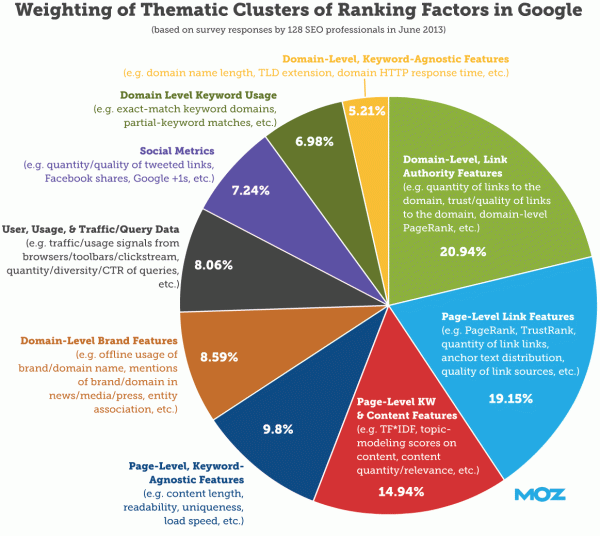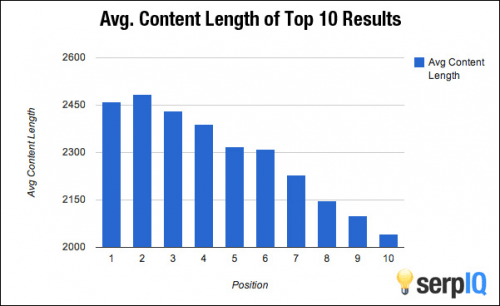Business owners often share frustrations with their employees, friends, family or seemingly tech-savvy strangers on the street about their company website. They’ve heard that it’s absolutely necessary to have an online presence, but they know their website isn’t making any money. There’s a solution for that and it goes by the name of search engine optimization (SEO). Before deciding to invest in an SEO specialist, business owners should rightfully question just what this mysterious concept is, how it works and what makes it so valuable.
When I told my parents all about my job at Snap, they were quite confused about what exactly I did for a living. I spent months explaining it in simple terms, examples and metaphors. Try as he might, my dad still didn’t know if SEO was a noun, a verb or my job title. I realized that if my own family was confused, which is so invested in my day-to-day life, there’s a good chance my clients had the same confusion.
At Snap Agency we have many special digital marketing skills, but SEO is our bread and butter. It’s a process that takes time, effort and a whole lot of knowledge. We’ve gotten pretty good at answering inquiries, and, over time, the results usually speak for themselves. There are many components of technical SEO that make a page valuable. Here are a few of them.
Must-Have Ranking Factors for an Optimized Page
Page Titles
To use the technical definition, these rich snippets are enclosed in a <title> tag, and their purpose is to provide a preview of what users and search engines alike can expect to find when they continue on to the page. To the layman, this is the blue link text that appears in search engine results pages (SERPs). These tags must be relevant and accurately describe the page itself. They are 50–60 characters long and should include your brand name at the end.
Page Title | Optional 2nd Keyword | Brand Name
These tags present an opportunity for keyword targeting, but bear in mind that since they’re so utilized by users and search engines, it’s important to be honest when writing page titles. Search engines may reward you initially, but when human users realize that you’ve tricked them into believing your page is something it’s not, they’ll no longer trust you. In short, don’t stuff keywords into your page title if they don’t reflect the actual content of the page.
Meta Descriptions
They’re enclosed in a <description> tag on each of your site pages, and they’re similar to titles in that they appear in SERPs and should also describe the page they’re representing. Meta descriptions are slightly longer than page titles: You have about 150–160 characters to work with. While describing the page, it’s also best to call out your brand name again.

The trickiest aspect of page titles and meta descriptions lies in indicating to users if the information they’re looking for can be found on this page while also providing a compelling enough description that the user will want to click on your page and no one else’s. Since these description appear in SERPs, your top competitors will also be on this page. The title and description you provide should be intriguing enough to make a user end up on your page and no one else’s.
Beware of Meta Keywords
Meta keywords look like such an easy win. Simply write down what your page is about and watch the traffic pour in, right? Not so fast. Meta keywords are like handlebar mustaches — outdated and untrustworthy. They might have been attractive to search engines once upon a time, but now they’re big red flags.
Heading Tags
These elements, enclosed in an <h1> tag, often get mistaken for formatting assets and nothing more. Subheadings should be enclosed in <h2> tags, <h3> tags and so on. A common, yet not ideal, use of the <h1> tag is to enclose title elements, such as “About Us,” or “Contact Us.” Search engines refer to these tags to determine the purpose, or mission, of the page. They should be used to reinforce the information a user can find in the page while incorporating the appropriate keywords.
ALT Attributes
Users tend to be very visual. Your images are often your best asset, so you want them to be searchable. This is where ALT attributes come into play because search engines can’t see images. Properly implemented ALT titles offer a brief description of the image. Again, be honest when writing this content. Because these images appear in search results when a user conducts a search, the user will know right away if you’re stuffing a keyword into the image title for your own personal gain.
These tags are especially valuable for ecommerce companies. When loyal and potential customers search for your product by name, this is what ensures that your images appear in search results.
These are a few basic essential ranking components of technical SEO. Back to the original question: Why is this valuable? The answer is that if the above elements are all in place, and they accurately describe what your user is searching for, your website will be optimized for their journey from the initial search query to the last step of a conversion.
Do Other Factors Contribute to My Ranking?
You’re off to a great start after addressing all aforementioned technical SEO ranking factors, but what’s the next step? Your digital presence is a well-oiled machine, and lots of moving parts need to be working properly for the marketing strategy to do its job. In addition to properly implement the above on-page elements, we find that a standout website is making proper use of usability, backlinks and content.
Usability
While usability falls largely under the design umbrella, it’s equally important to consider what your user needs to see before making an informed decision. Then you can determine the best way to offer that information via a beautiful, easy-to-use, responsive web design. This information doesn’t just pertain to design assets, but it also pertains to content presented in a way that earns attention from search engines while not overwhelming your user. Usability has an indirect, but nonetheless powerful, impact on SEO. A user-friendly website encourages backlinks from high-quality domains, which communicates to search engines that your website is of equally high quality and trustworthiness.
One important aspect of usability is ensuring that your website is mobile-friendly. Not only is this a Google-confirmed ranking factor, but 40% of web traffic is purely mobile. So, ranking factor or not, ignoring these users means losing a significant portion of traffic to your site.
Backlinks
Backlinks are nods from other trustworthy websites that your business is worth customers’ time. When another site references your website as a source of information, a product, etc., and includes a link directing users to your site, that is called a backlink. According to Moz, they account for over 40% of a site’s overall rankability. These valuable links should not be overlooked. Earning quality backlinks should be a part of every digital marketing strategy.

When identifying backlink opportunities, bear in mind that .gov, .edu and .org domains typically carry more weight and trust than .com domains.
Great Content
This is one of the most basic and simultaneously difficult elements to explain. There’s a lot that goes into excellent content. A common misconception is that for a site to be especially user-friendly, it should be short, sweet and to the point. Let’s clear that up right now: Long-form content is the way to go if you want your page to be recognized by search engines. If you’re looking for a first-page spot on a search engine result page (SERP), you better be ready to write.
This means creating more than 1,500 words on key site pages. Key site pages are usually category pages or service pages. It’s not enough to ramble on: What makes content valuable is its relevance to what your user is looking for and if it reads well. Your content must be informative, cohesive and comprehensible.

For those who are new to the world of SEO, duplicate content is a no-no. If you think you can use the same 1,500 words and swap out one service’s name for another, you’ll be looking at a Google penalty in no time.
Keyword Integration
An optimized content marketing strategy also includes proper keyword targeting. This does not mean repeating keywords over and over again, but instead you are demonstrating thoughtful content. A truly targeted keyword page will have variation. If you specialize in selling leather shoes in Minneapolis, your page shouldn’t repeat variants of “leather shoes in Minneapoils.” Instead discuss different types of shoes, shoes for men and women, colors of leather, care instructions, etc. See the difference?
We’ve written posts about why content is necessary to complement a beautiful web design, and technical SEO is a similar concept. If your website is a dinner plate, design is the big juicy cheeseburger and technical SEO is the vegetables. It’s not as fun to look at, but it’s just as essential for a healthy website. Once these technical elements are in place, Snap can take your SEO strategy to the next level.
